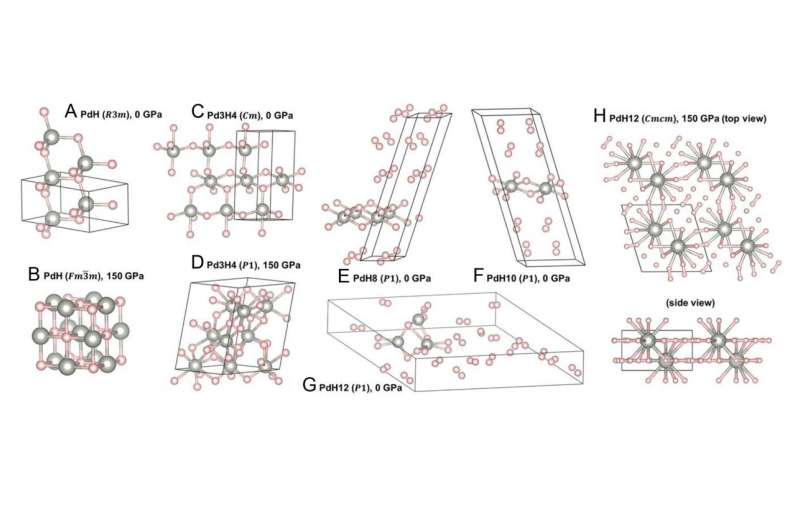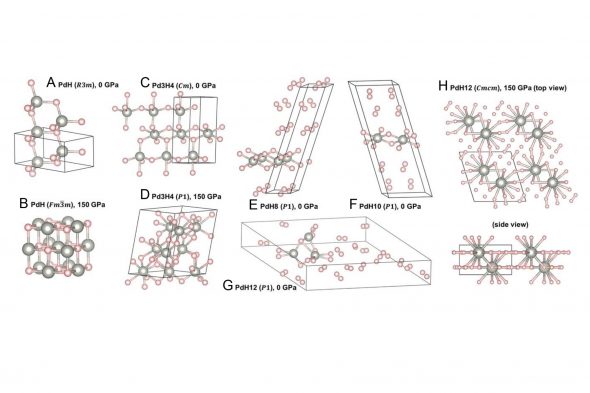
A new study featured in Proceedings of the National Academy of Sciences offers a potential alternate approach that combines pressure and electrochemistry to stabilize superhydrides at moderate, perhaps even close to ordinary, pressures. Superhydrides are a materials system where temperature superconductivity has been achieved, but only at very high pressures.
University of Illinois Chicago’s Russell Hemley and researchers from Carnegie Mellon University performed quantum mechanical simulations of superhydrides over a broad range of pressure as well as electrical potentials as found in an electrochemical cell.
The results showed that under an electrical potential a number of these materials, including high-temperature superconducting superhydrides, could be stable at much lower pressures.
Using a thermodynamic analysis, they constructed pressure–potential phase diagrams that provide an alternate synthesis approach to access phases having high hydrogen content.
Their strategy suggests the possibility of making palladium superhydrides, a widely studied material system, and a general concept for synthesizing other hydrides at modest pressures.
This approach opens more opportunities for the creation of superhydrides and other materials by combining pressure and electrochemical loading techniques, according to Hemley, UIC professor of physics and chemistry and LAS Distinguished Chair in the Natural Sciences in the College of Liberal Arts and Sciences.
The findings could have implications and uses within consumer and industrial sectors.
“Numerous extensions of existing electrochemical and high-pressure techniques could lead to altogether different materials created under an even broader range of pressures. This proof-of-concept work should serve to explore the frontier of high-pressure electrochemistry to produce exciting materials with broad applications,” the study stated.
New cerium superhydrides become stepping stones to ‘Goldilocks’ superconductors
More information:
Pin-Wen Guan et al, Combining pressure and electrochemistry to synthesize superhydrides, Proceedings of the National Academy of Sciences (2021). DOI: 10.1073/pnas.2110470118
Data and caculations: github.com/BattModels/P2
Provided by
University of Illinois at Chicago
Citation:
Combining pressure, electrochemistry to synthesize superhydrides (2021, November 15)
retrieved 15 November 2021
from https://phys.org/news/2021-11-combining-pressure-electrochemistry-superhydrides.html



